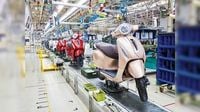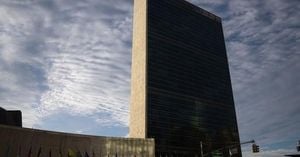On September 9, 2025, Taiwan-based Lianyou Metals made its debut on the Taiwan exchange, stepping into the spotlight at a time when the global metals industry is experiencing dramatic shifts. As geopolitical tensions and supply chain disruptions continue to ripple through international markets, Lianyou Metals is positioning itself as a key player, particularly in the production of cobalt metal powder and its longstanding presence in the tungsten market, according to recent reports.
But Lianyou’s rise isn’t happening in a vacuum. Across Asia, the automotive industry has been grappling with a rare earth crisis that has underscored just how interconnected—and vulnerable—the world’s supply chains really are. Back in April 2025, China, which commands a staggering 40 percent of the world’s rare earth mineral deposits and accounts for 92 percent of the global supply of rare earth magnets, imposed strict export sanctions. This move sent shockwaves through India’s automotive sector, the world’s fourth largest, threatening to bring production to a grinding halt just as the crucial festive season approached.
The timing couldn’t have been worse for Indian automakers. The festive season, which accounts for about 40 percent of annual sales, loomed large, and the prospect of empty showrooms was all too real. Rare earth magnets, especially those made from neodymium-iron-boron and samarium-cobalt, are the lifeblood of modern vehicles, powering everything from electric motors to advanced air conditioning systems. India’s automobile sector alone imported about 870 tonnes of these magnets last year, highlighting the scale of dependence on Chinese supply.
Yet, in a surprising turn of events, the deadlock began to ease in late August. According to Forbes India, production and shipments at Bajaj Auto, the country’s third-largest two-wheeler manufacturer and its leading electric two-wheeler brand, recommenced on August 20, 2025. "Production and shipments recommenced on August 20, marking a faster-than-anticipated return to full capacity," Bajaj Auto announced in a statement. The company added, "Bajaj Auto has secured a sufficient supply of rare earth magnets and other key materials to ensure availability during the upcoming festive season." This reprieve has been a lifeline for an industry that was teetering on the edge.
China’s dominance isn’t just about sheer volume of resources. The country has invested heavily in refining capacity, now handling as much as 90 percent of the global supply of rare earth minerals. With 44 million tonnes of rare earth elements in its reserves, compared to India’s 6.9 million tonnes, China’s grip on the market is formidable. It’s this dominance that allowed Beijing to use rare earth exports as a strategic lever during its ongoing trade war with the United States—and, for a time, with India as well.
Amid these tensions, China’s foreign ministry struck a conciliatory tone. On August 19, Mao Ning, spokesperson for the ministry, stated, "What I can tell you is that we are willing to strengthen dialogue and cooperation with relevant countries and regions to jointly maintain the stability of the global industrial and supply chains." For many in the industry, this was a welcome signal that a return to normalcy might be on the horizon, even if the underlying vulnerabilities remain.
The situation has also sparked a reckoning within the automotive sector and beyond. As Harshvardhan Sharma, group head of the automotive tech & innovation group at Nomura Research Institute, told Forbes India, "In the medium-to-long term, significant investments in alternative motor technologies will be necessary for automakers to reduce their dependence on rare earth magnets. Given the scale of the issue, this is unlikely to be a silver bullet in the short term but could help create a more balanced supply-demand situation in the future." In other words, while the immediate crisis may be easing, the need for diversification and innovation is clearer than ever.
This is where companies like Lianyou Metals come into the picture. By expanding its production of cobalt metal powder, Lianyou is tapping into a crucial segment of the supply chain that’s increasingly in demand—not just for traditional automotive uses, but also for the booming electric vehicle (EV) market and other advanced technologies. Cobalt, along with tungsten, is a key ingredient in batteries and high-performance alloys, making it indispensable for everything from smartphones to jet engines.
As of its listing, Lianyou Metals maintains a strong position in the global tungsten market, which is itself subject to many of the same pressures as the rare earth sector. Tungsten’s unique properties—extreme hardness, high melting point, and resistance to corrosion—make it vital for industrial applications ranging from cutting tools to electronics. With supply chains under strain, companies that can reliably deliver these materials are in a prime position to benefit.
Yet, the broader lesson from this year’s rare earth crisis is one of caution. Even as automakers like Bajaj Auto secure their immediate needs and companies like Lianyou Metals ramp up production, the underlying risks have not disappeared. The global market for critical minerals remains highly concentrated, with China holding most of the cards. Any future flare-up—whether geopolitical or logistical—could once again send shockwaves through industries around the world.
For India, the experience has underscored the importance of developing its own resources and refining capacity. While the country boasts 6.9 million tonnes of rare earth deposits, it currently lacks the infrastructure to process these minerals at scale. This gap has left Indian manufacturers at the mercy of external shocks, a vulnerability that policymakers and industry leaders are now keenly aware of.
Looking ahead, the push for alternative motor technologies and diversified supply chains is likely to accelerate. Industry experts argue that only by investing in research, development, and new processing facilities can countries hope to break the stranglehold of a single supplier. It’s a daunting task, but as recent events have shown, the cost of inaction can be even higher.
For now, the resumption of production and the easing of supply constraints offer a much-needed respite. Festive sales in India are back on track, and companies like Lianyou Metals are seizing new opportunities. But the story of rare earths and critical minerals is far from over. As the world’s appetite for advanced technologies grows, so too will the competition—and the stakes—for control over the resources that make them possible.
In the end, the events of 2025 have served as a wake-up call for industries and governments alike. The path forward will require resilience, innovation, and a willingness to rethink old assumptions about how and where the world gets its most vital materials.




